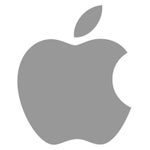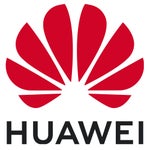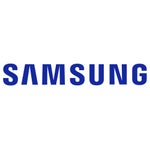News
MacBook Pro Touchscreen Confirmed: Analyst Reveals OLED Model with On-Cell Tech
MacBook Pro Touchscreen Confirmed: Analyst Reveals OLED Model with On-Cell Tech
After years of resistance, Apple is poised to revolutionize its flagship laptop. According to renowned analyst Ming-Chi Kuo, the company will introduce its first touchscreen MacBook Pro featuring an OLED display in late 2026. This isn't just an incremental update, it's a fundamental reimagining of the MacBook experience, merging the power of macOS with the intuitive touch interactions you love from your iPhone and iPad.
What Makes This Different from Regular Laptops?
OLED Display Technology: Unlike traditional LCD screens that require a separate backlight, the new MacBook Pro will utilize OLED technology where each pixel generates its own light. Imagine millions of microscopic lights that can switch completely off to achieve perfect blacks or illuminate with intense color. This results in unparalleled contrast, vibrant hues, and a more lifelike viewing experience for everything from photography to films.
On-Cell Touch Technology: Apple isn't merely adding a standard touch layer. The company is leveraging advanced on-cell technology, which integrates the touch sensors directly into the display. This approach allows for a thinner form factor while delivering exceptionally responsive and accurate touch input—eliminating the lag and imprecision found in cheaper touchscreen laptops.
Real-World Benefits You'll Actually Notice
Reduced Eye Strain and Improved Health
OLED technology is significantly easier on your eyes during extended use. By emitting light more naturally and achieving true blacks without backlight bleed, OLED displays reduce eye fatigue during long work sessions or movie marathons. Furthermore, the technology inherently reduces harmful blue light emissions by up to 70% compared to standard LCDs.
Enhanced Battery Life in Daily Use
Here's a significant advantage: when using dark mode interfaces (which are increasingly popular), OLED screens consume less power. Because black pixels are completely turned off, activities like browsing the web, coding in a dark IDE, or reading documents can potentially extend your battery life by 20-30%.
Intuitive and Natural Interaction
If you've ever instinctively reached for your MacBook's screen to scroll or select something, you understand the appeal. The touchscreen will enable you to:
-
Scroll seamlessly through documents and webpages with a swipe of your finger.
-
Pinch-to-zoom on photos, maps, and design files with precision.
-
Tap directly on UI elements and hyperlinks, streamlining your workflow.
-
Use multi-touch gestures already familiar from iOS and iPadOS.
Who Will Benefit Most?
Students and Professionals
-
Research and Annotation: Instantly highlight text, annotate PDFs, and navigate complex documents with tactile precision, bypassing clumsy trackpad gestures.
-
Presentations and Collaboration: Point directly to elements on your screen during video calls or meetings, making your explanations clearer and more dynamic.
Creative Professionals
-
Photo and Video Editing: Make precise adjustments by touching the exact area of an image you want to correct, streamlining the editing process.
-
Design and Illustration: Interact directly with your canvas for sketching, drawing, and manipulating design elements, bridging the gap between Mac and iPad.
Everyday Users
-
Web Browsing: Navigate social media feeds, news sites, and online stores with the same natural gestures you use on your phone.
-
Media Consumption: Control playback, adjust volume, and skim through photo libraries with intuitive touches.
What About Apple Pencil Support?
While not yet confirmed, Apple's patents strongly suggest the touchscreen MacBook Pro will support the Apple Pencil. This would unlock powerful new capabilities:
-
Detailed note-taking and annotation directly on the screen.
-
Precision editing for photographers and graphic designers.
-
Handwriting recognition for quick notes and mathematical equations.
-
Professional-grade drawing and sketching without a separate tablet.
Pricing and Availability: What to Expect for the MacBook Pro
-
Timeline: Mass production is slated for late 2026, with a consumer launch most likely in early 2027.
-
Pricing: As a premium feature debuting on high-end OLED models, expect these MacBook Pros to command a significant price premium over their non-touch counterparts.
-
Model Options: The touchscreen functionality is expected to launch on high-end MacBook Pro models, likely the 14-inch and 16-inch versions equipped with next-generation M-series chips (e.g., M6 or M7).
For more details, you can definitely check the official site here.
Addressing Common Concerns
"Won't This Make the Screen More Fragile?"
Modern OLED displays are manufactured with durability in mind. Leading PC makers like Samsung, ASUS, and Lenovo have successfully used OLED touchscreens in laptops for years. Apple's implementation will undoubtedly include strengthened glass and robust engineering to meet its high standards for reliability.
"What About the Risk of Screen Burn-In?"
While a historical concern for OLEDs, modern technology has largely mitigated this issue. Current OLED panels use sophisticated pixel shifting, dynamic brightness adjustment, and other software protections. Apple's extensive experience with OLED on iPhone and Apple Watch demonstrates a proven ability to manage burn-in risk effectively.
"Will It Drain the Battery Faster?"
Touchscreen functionality itself is minimal in its power draw. The overall battery impact will be determined by the display. In bright, full-screen white applications, OLED can use more power. However, for typical mixed use and especially with dark mode enabled, the efficiency of OLED technology often results in net battery life improvements.
How This Will Transform Your Daily Workflow
Casual Browsing and Communication
Navigate through emails, news articles, and social media with effortless swipes and taps, making the experience more fluid and immediate than using a trackpad.
Professional Presentations and Demos
Directly interact with on-screen elements during client presentations or team calls. Illustrate your points clearly by tapping, drawing, or highlighting in real time.
Creative Projects and Content Creation
Edit videos, manipulate layers in Photoshop, or design graphics by touching the canvas directly. This hands-on approach can make creative work feel more natural and less abstract.
Focused Study and Research Sessions
Annotate research papers, highlight key text, and organize notes with a level of direct manipulation that feels like working with physical documents.
The Bigger Picture: A Unified Apple Ecosystem
This move signifies Apple's commitment to a cohesive ecosystem. The touchscreen MacBook Pro represents the final step in creating a continuous user experience across all devices. You will soon be able to:
-
Employ a consistent set of gestures across your iPhone, iPad, and Mac.
-
Switch between devices without relearning interaction methods.
-
Apply the touch skills you've developed over years of using smartphones.
In summary, the introduction of the touchscreen MacBook Pro is not merely about adding a new feature, it's about adapting the laptop to modern user behavior. It promises to make computing more intuitive, efficient, and engaging for everyone, from professionals and creatives to everyday users.
If you've been anticipating Apple's embrace of this technology, 2026 appears to be the watershed moment. The fusion of OLED's superior visual quality with responsive, precision touch controls is set to establish a new benchmark for the entire premium laptop market.
Related Articles
-
iPad (2025) Debuts with A16 Chip: Faster, Smarter & More Storage but without Apple Intelligence
-
New iPads and iPhone SE Coming in April: Everything You Need to Know












